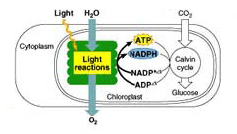Barksdale Air Force Base in Bossier Parish, Louisiana, puts on a spectacular air show each year. Yet, when I see those thundering jets streaking through the air, my thoughts turn to the large quantity of oxygen being sucked out of the atmosphere in order to oxidize fuel created millions of years ago and provide the force necessary to propel the aircraft.
Fossil fuels are derived from the long-buried remains of vegetation that existed millions of years ago and very gradually changed into the coal and oil we recognize today. But where does the oxygen come from?
The air we breathe consists of nearly 21% oxygen, essentially all of which is created by plants that inhabit the earth we share. It is the process of photosynthesis that generates the oxygen vital to life, and when considering alternative sources of renewable, sustainable energy, we must recognize that the burning of fuel also consumes oxygen. Therefore, materials used for combustion must be balanced with replenishment of the oxygen consumed in the process. The continual burning of fossil fuels may gradually outstrip the rate of oxygen renewal, particularly as forests are cleared for other human purposes, and this is a concern for those who care about the planet's future.
The mechanisms of photosynthesis have been detailed by biophysicists, biochemists and plant physiologists in printed material available at bookstores, libraries, scientific journals, and elsewhere on the Web.*
| THE SOURCE OF OXYGEN IS WATER |
|---|

Image source: McGraw Hill Co. |
During the process of photosynthesis, the energy of the sun's rays — which otherwise would fall upon the earth, warming it — is captured by chloroplasts and utilized to drive the complex activation of water to yield oxygen, protons and electrons. The oxygen is released into the atmosphere, the protons establish a gradient that drives the synthesis of ATP, a source of biochemical energy, while the electrons enter an electron transport chain that drives, among other things, the formation of NADPH, a source of biochemical reductive power that provides hydrogen in the biosynthesis of many cellular components.
But what about carbon dioxide?
In other metabolic processes that do not require sunlight, carbon dioxide is combined with the 5-carbon metabolite ribulose 1,5-bisphosphate to form an unstable 6-carbon intermediate that dissociates into two each of the
The various metabolic steps are controlled and catalyzed by enzymes within complex structures that have evolved over time for this specialized and remarkable process. This is an enticing field of study that still has many avenues left to explore.
However, the important message is that sunlight-driven processes are responsible for the oxygen we breathe, the removal of carbon dioxide from the atmosphere, and the creation of new sources of fuel that we can subsequently burn to both power machines and produce electricity. Clearly, the existence of modern human society is intimately dependent on plant life both for sustenance as well as a source of usable energy, and we must acknowledge this dependence and accommodate ourselves to this fact.
The establishment of tree orchards devoted to capturing the sun's energy for the purpose of furnishing renewable and sustainable sources of fuel to power our energy needs is thus crucial to the continued maintenance of our standard of living. To this end, plantations of tallow trees as described in this website have an important role to play in our energy-balanced future.
April, 2016
*See, for example, "RuBisCO," Wikipedia, https://en.wikipedia.org/wiki/RuBisCO.
Web site created June, 2014
|
|
ABOUT
|